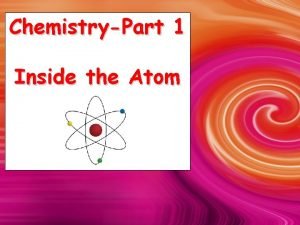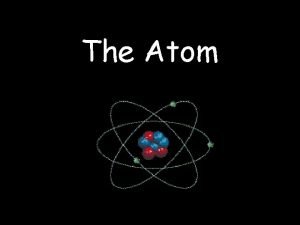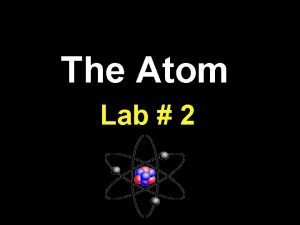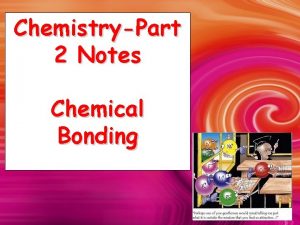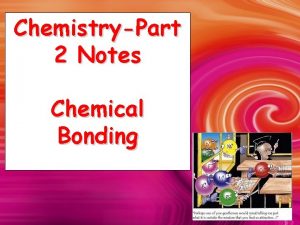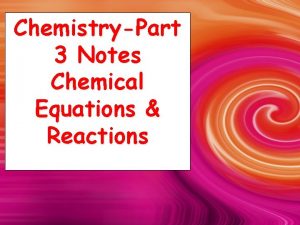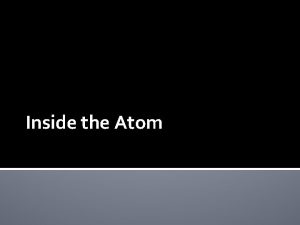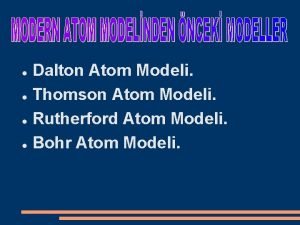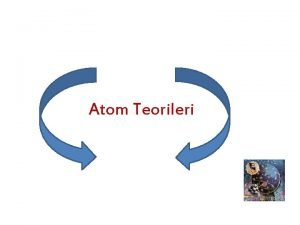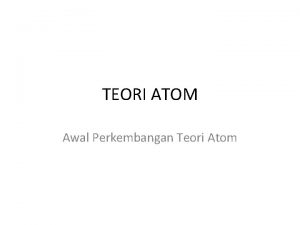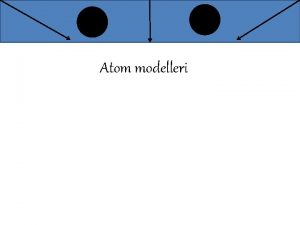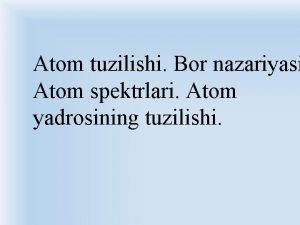ChemistryPart 1 Inside the Atom What is an



















- Slides: 19

Chemistry-Part 1 Inside the Atom

What is an Atom? • Matter is anything that takes up space and has mass. Matter is made up of atoms. • Atoms: -the smallest unit into which matter can be divided. -building blocks of matter. • -comprised of a nucleus (at it’s center) and an electron cloud (surrounding the nucleus. • -made up of sub-atomic particles.

INVESTIGATE. • Take a piece of paper, and cut it in half. • Cut the half piece of paper in half again. • Continue until you cannot Cut the remaining piece of paper any longer… (Remember, Scissor Safety!!!) • How many times were you able to cut it?

Consider This… • Do you think we could keep cutting the paper forever? Why or why not? • How many times would you have to cut the paper in half to get the size of an atom? Best Guess?

Consider This… • You would have to cut the paper in half around thirty-one (31) times to get to the size of any atom.

FAST FACTS: • It would take a stack of about 50, 000 aluminum atoms to equal the thickness of a sheet of aluminum foil from your kitchen • If you could enlarge a penny until it was as wide as the US, each of its atoms would be only about 3 cm in diameter – about the size of a ping pong ball • A human hair is about 1 million carbon atoms wide • A typical human cell contains roughly 1 trillion atoms • A speck of dust might contain 3 x 1012 (3 trillion) atoms • It would take you around 500 years to count the number of atoms in a grain of salt

What are Subatomic Particles? • smaller than an atom -protons (+), neutrons (0), electrons (-)

Early Atomic Models • Rutherford Model: -Most empty space. -Small, Positive Nucleus -Contained protons and electrons scattered around the outside.

Early Atomic Models • Bohr Model: -Electrons move in defined orbits around the nucleus.

Early Atomic Models • Electron Cloud Model: -sometimes called the wave model. -spherical cloud of varying density. -varying density shows where an electron is more or less likely to be.

Subatomic Particles • What are Protons? -positively charged particles. -Help make up the nucleus of the atom. -Equal to the atomic number of the atom. -Contributes to the atomic mass. -Equal to the number of electrons. ++ + + + - - -

Subatomic Particles • What are Neutrons? -neutral particles; have no charge. -Help make up the nucleus of the atom. -Contributes to the atomic mass. - ++ + + + - - -

Subatomic Particles • What are Electrons? -negatively charged particles. -Found outside the nucleus of atom in the electron orbitals. -Each orbit/level can hold a different number of electrons. -1 st Orbital 2 e’s, 2 nd and on Orbital 8 e’s. , - ++ + + + - - -

Subatomic Particles • Valence Electrons: -Found in the outermost energy level of the electron cloud. (Called the valence shell) -Involved in bonding. -Determine the chemical properties of an element.

Atomic Center • Protons and neutrons are grouped together to form the “center” or nucleus of the atom.

How are Atoms Described? -Atomic Number = number of Protons. • -In a neutral atom, the number of protons = the number of electrons. • -Atomic Mass is the number of Protons + the number of Neutrons.

Example: Oxygen Atom: Bohr Model:

Changing the Properties of Atoms: • An ion is an atom or molecule with a net electric charge due to the loss or gain of one or more electrons. • An isotope is each of two or more forms of the same element that contain equal numbers of protons, but different numbers of neutrons in their nuclei, and have a different atomic mass but not in different chemical properties. • A molecule is a group of atoms bonded together, representing the smallest fundamental unit of a chemical compound that can take part in a chemical reaction.

What Forms If…?
 Whats inside an atom
Whats inside an atom Whats the nucleus
Whats the nucleus Whats inside an atom
Whats inside an atom The structure of the atom section 2 defining the atom
The structure of the atom section 2 defining the atom Teori perkembangan atom dalton
Teori perkembangan atom dalton ưu thế lai là gì
ưu thế lai là gì Môn thể thao bắt đầu bằng từ chạy
Môn thể thao bắt đầu bằng từ chạy Tư thế ngồi viết
Tư thế ngồi viết Hình ảnh bộ gõ cơ thể búng tay
Hình ảnh bộ gõ cơ thể búng tay Cái miệng nó xinh thế chỉ nói điều hay thôi
Cái miệng nó xinh thế chỉ nói điều hay thôi Mật thư tọa độ 5x5
Mật thư tọa độ 5x5 Tư thế ngồi viết
Tư thế ngồi viết Thế nào là giọng cùng tên?
Thế nào là giọng cùng tên? Gấu đi như thế nào
Gấu đi như thế nào Thẻ vin
Thẻ vin Thơ thất ngôn tứ tuyệt đường luật
Thơ thất ngôn tứ tuyệt đường luật Khi nào hổ con có thể sống độc lập
Khi nào hổ con có thể sống độc lập Từ ngữ thể hiện lòng nhân hậu
Từ ngữ thể hiện lòng nhân hậu Thế nào là hệ số cao nhất
Thế nào là hệ số cao nhất Diễn thế sinh thái là
Diễn thế sinh thái là
